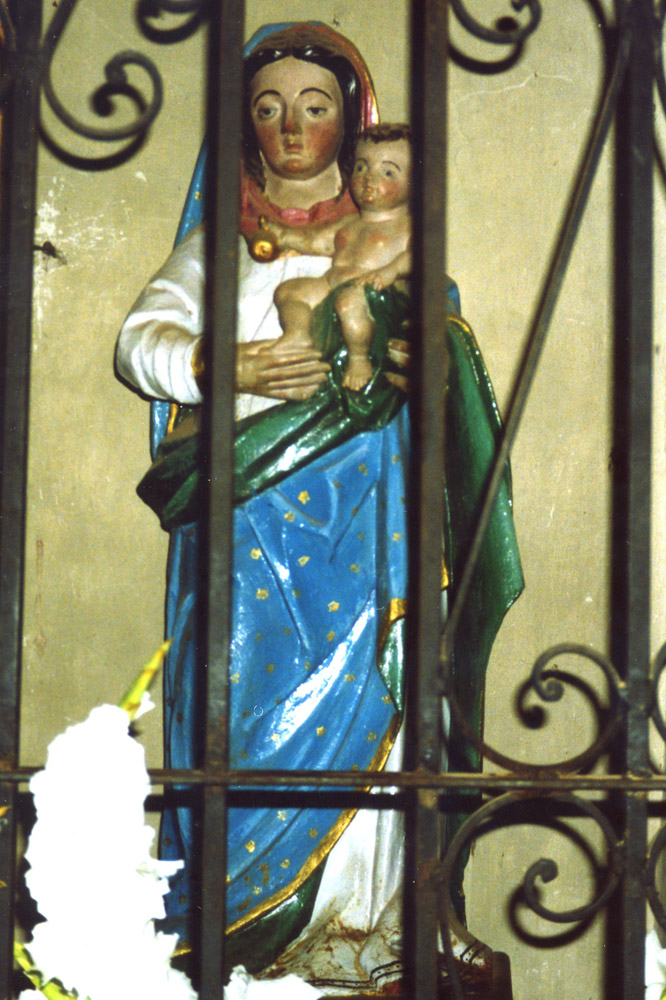Virgin and Child:
The Virgin has drooping lids, a pouting
mouth and a determined chin. The dark hair hides the ears
completely. The face has a low gloss and the skin is
discolored. The carved hands of Virgin and Child are not
free of their bodies, and the gessoed wood between the
mother's fingers give a webbed appearance. The Virgin's
hair and veil are of a piece with the neck.
The Child is naked. In the right hand
he holds a golden fruit, possibly a pomegranate, a
Christian symbol of resurrection and eternal life. The
face resembles those of the stone angels carved in the
baptistery. The clothing's flat colors and dull sheen
indicate a repainting, as does the fresh color of the
eyebrows. However, the skin of both is not repainted.
Basis for Identification: White
gown and blue mantle, child in arm.
Other characteristics: Green
sash, red veil.
Site: Basilica of
Santiago Cuilapan.
Location: To the
right of the Virgen del
Rosario, behind a grill at the east end of the
south wall of nave (see note).
Media and construction: Wood,
gesso, paint. Hair: carved. Eyes: painted. Closed mouth.
Size: About 2 feet (60 cm.)
Comparable santos in Oaxaca: Coixtlahuaca, Coixtlahuaca2, Guelavia,
Huitzo,
Díaz
Ordaz1, Díaz
Ordaz2, Zimatlán.
External Links:
Wikimedia Commons:
Statues
of
Virgin Mary in Mexico
ReligionFacts.com: Pomegranate
Symbol
Christian Iconography: The
Virgin
and Child
Next: Christ Carrying the
Cross
Previous santo
Introduction to Santiago Cuilapan
Santos Home Page
Note: On
this
site,
references to the cardinal directions always assume
that the main altar is at the east end of the church,
the narthex or entry area at the west end, and the two
walls
of the nave on the
north and south. (The
nave is the long central section.)
Actual orientations may differ.
The photo shown here is licensed under the
Creative Commons Attribution-Share Alike 3.0 Unported
license. You are free to share or remix it on two
conditions: first, that you attribute it to the
photographers, Claire and Richard Stracke, without
implying any approval of your work on their part;
second, that if you alter, transform, or build upon
this photo, you may distribute the resulting work only
under the same or similar license to this one.
|


